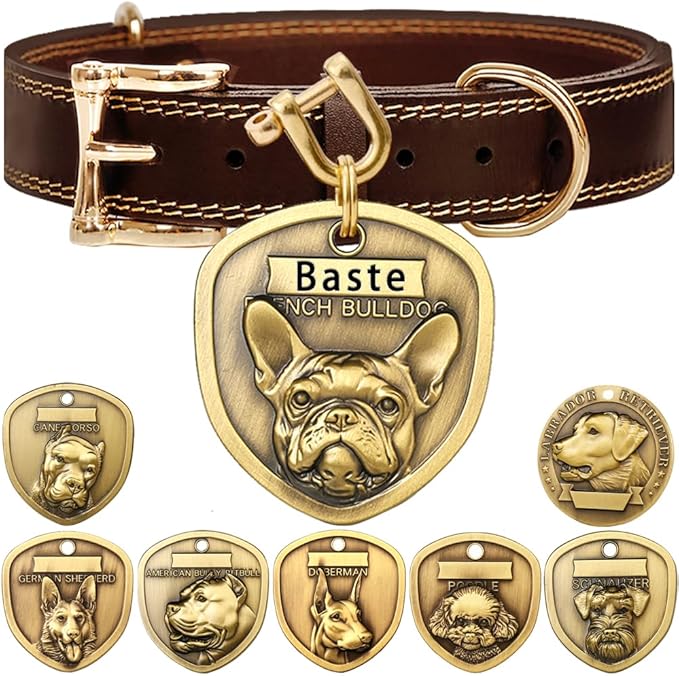The History and Origin of the French Bulldog
This post may contain affiliate links, which means I’ll receive a commission if you purchase through my link, at NO EXTRA COST TO YOU
French Bulldogs have become one of the most popular companion dogs worldwide. These small, sturdy dogs boast a rich and fascinating history. Tracing their origins back to England and France, they were bred for companionship. Despite their somewhat “tough” appearance, French Bulldogs are known for their loving and gentle nature. Let’s dive into the detailed history and origin of this unique breed, exploring how the French Bulldog evolved and what makes them such special companions today.

English Roots: The Bulldog’s Beginnings
The French Bulldog’s story begins in England during the early 19th century. Initially, the ancestors of the French Bulldog were part of the larger Bulldog family. English Bulldogs were used for a sport called bull-baiting, a cruel practice where dogs would battle bulls in arenas. However, when bull-baiting was outlawed in 1835, Bulldog breeders began focusing on developing the breed for companionship rather than aggression.
At that time, many breeders sought to create a smaller, more manageable version of the Bulldog. They succeeded, and what emerged was a toy-sized Bulldog. These smaller dogs became especially popular among English lace workers, particularly in the city of Nottingham, who adored their playful and affectionate nature.
French Influence: Migration and Evolution
As the Industrial Revolution swept through England, many lace workers lost their jobs and decided to move to northern France in search of better opportunities. These workers took their beloved toy Bulldogs with them. As they settled into their new lives in France, the toy Bulldogs quickly gained popularity with the local population, especially among the Parisian working class.
French breeders began to take a keen interest in these Bulldogs. Through selective breeding, they developed distinct features such as the iconic “bat ears” and compact, muscular build. Unlike the traditional English Bulldog, the French Bulldog had a smaller frame, making them ideal for apartment living. They also retained their gentle temperament, which further endeared them to the French population.
Official Recognition: The Birth of the French Bulldog
By the late 19th century, the breed had firmly established itself in France and became known as the “Bouledogue Français.” French aristocrats and artists alike were charmed by the breed’s playful personality and affectionate nature. As the French Bulldog’s popularity soared, it began to spread beyond the borders of France, capturing the attention of dog lovers in other parts of Europe and the United States.
In 1897, the French Bulldog Club of America was formed, and the breed was officially recognized by the American Kennel Club in 1898. One key aspect of the breed standard, which still holds today, is the preference for the breed’s unique “bat ears,” a feature that distinguishes them from other Bulldog breeds.
The Role of French Bulldogs in American Society
The French Bulldog’s journey didn’t end in France. In fact, they soon became a fashionable dog in American high society. Prominent figures, including the Rockefeller and J.P. Morgan families, were drawn to their charming personalities and unique looks. By the early 20th century, French Bulldogs were seen at dog shows, parties, and even luxury events, solidifying their status as a symbol of sophistication.
In recent decades, the French Bulldog has become a favorite breed for urban dwellers, thanks to their small size and adaptable nature. As more people gravitate toward apartment living, the demand for compact, low-maintenance dogs has increased, making the French Bulldog a perfect fit for modern lifestyles.
Modern-Day Popularity: A Global Companion
Today, the French Bulldog ranks among the most popular dog breeds worldwide. From their humble beginnings as companions for lace workers to their current status as global celebrities, French Bulldogs have come a long way. Their small, muscular build, affectionate temperament, and charming “bat ears” make them a beloved choice for many families.
French Bulldogs are also known for their adaptability. They thrive in both small apartments and larger homes, making them an ideal breed for individuals or families with various living situations. Despite their energetic and playful demeanor, they don’t require extensive exercise, which further adds to their appeal in modern society.
French Bulldog Characteristics: Why They Stand Out
So, what sets French Bulldogs apart from other breeds? Their unique combination of appearance and personality plays a significant role. Their distinct flat-faced, “bat-eared” look is one of the most recognizable features in the dog world. However, their personality is equally charming. They are known for being affectionate, playful, and often very attached to their owners. French Bulldogs are great companions for children, seniors, and anyone looking for a loyal friend.
Additionally, they don’t bark excessively, which makes them perfect for apartment living or quieter households. They are social dogs that love to be the center of attention, which means they often thrive in environments where they can interact with their owners frequently.
Health Considerations: What to Watch For
While French Bulldogs are wonderful companions, they do come with specific health concerns. Due to their brachycephalic (flat-faced) structure, they can suffer from breathing problems, especially in hot or humid environments. It’s crucial for owners to be aware of these potential issues and provide proper care. Regular vet visits, proper nutrition, and monitoring their weight can help mitigate these risks.
Additionally, their short coat makes them more prone to temperature sensitivity, so they may require extra warmth in colder months and should be kept cool during hot weather.
Final Thoughts: The Enduring Appeal of French Bulldogs
The French Bulldog’s fascinating history showcases how a breed can evolve and adapt over time. From their English Bulldog ancestors to their rise in French society and eventual global popularity, French Bulldogs have left an indelible mark on the world. Their combination of physical traits, personality, and ability to adapt to various lifestyles makes them a perfect companion for many households today.
If you’re considering bringing a French Bulldog into your home, it’s essential to understand their origins, needs, and characteristics. This understanding ensures that you can provide the best care possible and enjoy a long-lasting bond with one of the world’s most beloved dog breeds.
Conclusion
In summary, the French Bulldog’s history and origin is a tale of evolution, adaptation, and companionship. Their journey from the streets of England to the fashionable homes of Paris, and eventually across the globe, has solidified their place as one of the most beloved dog breeds in the world. With their charming looks, affectionate nature, and adaptable lifestyle, French Bulldogs continue to capture the hearts of dog lovers everywhere.








